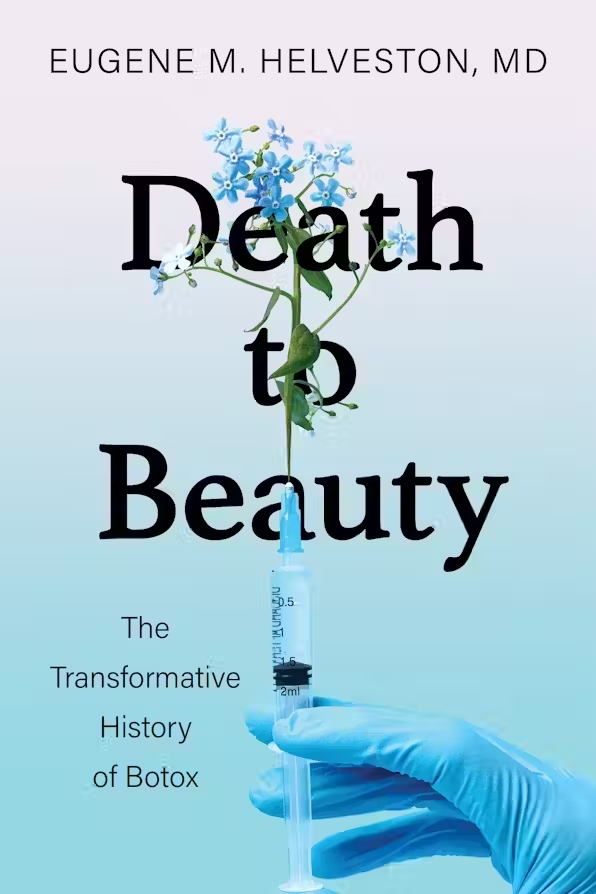As Eugene M. Helveston recounts in his recently published book, Death to Beauty: The Transformative History of Botox, it took more than 150 years for Kerner’s prediction to come true, in the form of Botox. Now a billion-dollar-a-year industry, Botox got its inadvertent start in the self-financed research laboratory of Alan Scott, an ophthalmologist from California who was treating patients with strabismus, or crossed eyes.
Helveston, also an ophthalmologist, joined Scott’s research team in 1982, when clinical trials of the drug that would become Botox were already underway. Nevertheless, Death to Beauty covers the entire journey, from the guts of German peasants to the faces of celebrities, with curious detours along the way, including Cold War–era CIA ops.
Botulinum, the toxin that causes botulism, is the world’s deadliest poison. It has no odor, color, or taste and can be lethal in doses as small as billionths of a gram. According to Helveston, as little as eight grams, the weight of a pencil, would be enough to kill every person on Earth.
The bacteria that produces botulinum is ubiquitous and can be consumed without issue, as it is by many people on a daily basis. However, if Clostridium botulinum is allowed to reproduce in an environment that lacks oxygen, salt, and acid, it produces botulinum. The toxin can be destroyed by exposing it to temperatures above 185 degrees Fahrenheit for five minutes, but consuming tainted food that is cooked to a lower temperature for less time may result in the poisoning known as botulism.
The relatively undetectable nature of botulinum has enticed would-be poisoners. Shamans suggested it to Indian maharajas to kill their enemies, and Winston Churchill feared that the Nazis would use it to taint the British water supply. Although the United States Office of Strategic Services determined it unlikely that botulinum could be used as a chemical weapon of mass destruction, the CIA later believed it was ideal for targeted assassinations of political opponents, like Fidel Castro.
In 1972, Scott obtained some samples for more benign purposes. Scott had worked on strabismus at the San Francisco Eye Research Institute and hypothesized that if he could weaken overactive eye muscles, the patient’s eyes would align. Could botulinum be the key? he wondered.
Pharmaceutical development is typically undertaken by dedicated teams at research universities, not independent practitioners in the lab before and after work hours. But Scott was able to establish that botulinum delivered via injection could indeed temporarily paralyze ocular muscles at doses well below the lethal limit and without adverse side effects.
